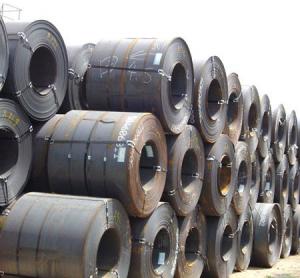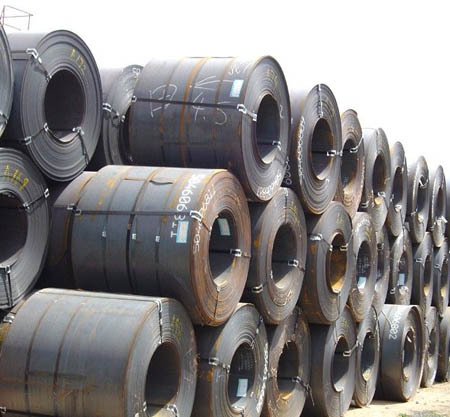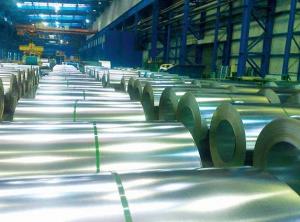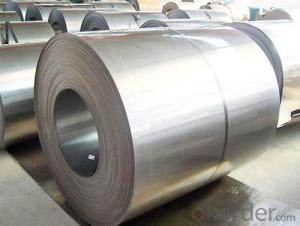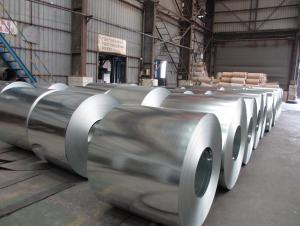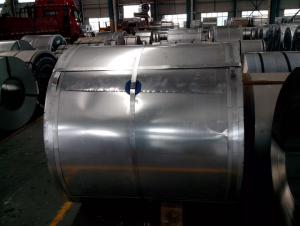Hot rolled steel coil
- Loading Port:
- China Main Port
- Payment Terms:
- TT OR LC
- Min Order Qty:
- -
- Supply Capability:
- -
OKorder Service Pledge
OKorder Financial Service
You Might Also Like
One, introduction
Edit
Hot rolled coil is used for continuous casting slab or slab as raw material, after reheating furnace heating, scales entered the roughing mill in the high pressure water, roughing cut is expected by the head, tail, and then enter the finishing mill, the implementation of the computer controlled rolling, finally after rolling through the laminar cooling (computer controlled cooling rate) and coiling machine coiling, become straight hair volume. Hair straightener roll head, tail often forms a tongue shape and fishtail, thickness, width of poor accuracy, edge has wavy, folding, tower and other defects. The volume weight heavier, steel coil diameter is 760mm. (general pipe industry like use. )
2 two, characteristics
Edit
Because there is no after annealing treatment, the hardness is very high (HRB greater than 90), mechanical processing performance is poor, only a simplebending process has less than 90 degree directional (direction perpendicular to the rolled).
3, use three
Edit
Hot rolled products with high strength and good toughness, easy processing and good forming can be excellent performance of welding, which is widely used in ships, cars, bridges, buildings, machinery, boiler, pressure vesselmanufacturing industry.
The scope of application:
(1) after annealing processing into the common cold;
(2) processing galvanized galvanized unit before the annealing treatment;
(3) the basic do not need to process the panel.
4 four, classification
Edit
Carbon steel plate, carbon plate, low alloy plate, ship plate, bridge plate, boiler plate, container plate etc.. Rolling hard volumes: under normal temperature,the hot pickling volumes of continuous rolling.
Hot rolled steel strip products include steel (roll) and the shear of steel plate.And steel (coils) can be divided into straight and finishes volume (the volume,smooth rolling and slitting roll).
- Q: How are steel coils used in the manufacturing of storage shelves?
- Steel coils are used in the manufacturing of storage shelves by being processed and formed into various components such as uprights, beams, and brackets. These components are then assembled to create sturdy and durable shelving units. The high strength and structural integrity of steel coils ensure that the storage shelves can support heavy loads and withstand the rigors of daily use.
- Q: What are the dimensions of steel coils?
- The dimensions of steel coils can vary depending on the specific product and application, but they typically range in thickness from 0.005 to 0.25 inches and in width from 0.5 to 72 inches. The length of steel coils can also vary, but it is commonly around 100 to 200 feet.
- Q: What are the main factors that affect the price of steel coils?
- The main factors that affect the price of steel coils are the cost of raw materials, supply and demand dynamics, production and transportation costs, changes in government policies and regulations, and global economic conditions.
- Q: How are steel coils used in the manufacturing of aerospace components?
- Steel coils are used in the manufacturing of aerospace components as they provide a reliable and durable material for various applications. The coils are typically cut and formed into different shapes to create components like structural supports, brackets, and fasteners. These components play crucial roles in the construction and assembly of aerospace systems, ensuring strength, stability, and safety in the final products.
- Q: How are steel coils used in the production of roofing materials?
- Steel coils are used in the production of roofing materials by being fed into a roll-forming machine, which shapes the coils into the desired profile for the roofing panel. The coils are then cut to the appropriate length, coated with protective finishes, and formed into individual roofing panels that are ready to be installed on buildings.
- Q: What is the difference between a steel strip and a coil? The steel strip is flat steel, and the steel coil is made of steel. Is that correct?
- Steel rolls are also called steel belts. There is no difference between them. They are not flat steel
- Q: What are the common methods of inspecting steel coils for quality control?
- There are several common methods of inspecting steel coils for quality control purposes. These methods typically involve visual inspection, dimensional measurement, and non-destructive testing. Visual inspection is one of the simplest and most common methods used to inspect steel coils. It involves visually examining the surface of the coils for any visible defects, such as scratches, dents, or discoloration. Visual inspection can also include checking for proper labeling, packaging, and any signs of corrosion or damage. Dimensional measurement is another important method used to ensure the quality of steel coils. This involves measuring various dimensions of the coils, such as thickness, width, and length, to ensure they meet the required specifications. Dimensional measurement can be performed using various tools such as calipers, micrometers, or laser measurement devices. Non-destructive testing (NDT) techniques are also commonly employed to inspect steel coils. NDT methods allow for the detection of internal and surface defects without damaging the material. One common NDT technique used for steel coil inspection is ultrasonic testing, which involves sending high-frequency sound waves through the coil and analyzing the reflected waves to identify any defects. Magnetic particle testing and dye penetrant testing are also used to detect surface cracks or defects in the coils. In addition to these methods, other quality control practices may include chemical analysis to ensure the composition of the steel meets the required standards, mechanical testing to evaluate the strength and hardness of the material, and corrosion testing to assess the resistance of the coils to corrosion. Overall, a combination of visual inspection, dimensional measurement, and non-destructive testing techniques is typically employed to ensure the quality and integrity of steel coils during the quality control process.
- Q: How are steel coils used in the production of pipes and tubes?
- Steel coils are an essential component in the production of pipes and tubes. They are used as the raw material to create the cylindrical shape of the pipes and tubes. The coils are unrolled and fed into a machine called a pipe or tube mill, where they undergo a series of manufacturing processes. First, the steel coils are unwound and straightened to remove any bends or twists. Then, the edges of the coils are trimmed to ensure they are smooth and even. This process is known as slitting. Next, the coils are passed through a forming machine, where they are bent into the desired shape. For pipes, the coils are bent into a circular shape, while for tubes, they can be formed into various shapes, including square, rectangular, or oval. Once the coils have been formed, they are welded together along the length to create a continuous pipe or tube. This welding process can be done using various techniques, such as high-frequency induction welding, electric resistance welding, or submerged arc welding. After the welding is complete, the pipes or tubes may undergo additional processes to improve their properties. These processes can include heat treatment, such as annealing or quenching, to enhance their strength or hardness. Finally, the pipes or tubes are cut to the desired length and may undergo further finishing processes, such as straightening, polishing, or coating, depending on their intended application. In summary, steel coils are used in the production of pipes and tubes as the starting material. They are unrolled, straightened, and formed into the desired shape before being welded together to create a continuous pipe or tube. These products can then undergo various additional processes to improve their properties and meet specific requirements.
- Q: Can steel coils be custom-made to specific requirements?
- Indeed, it is possible to manufacture steel coils according to specific requirements. Steel producers possess the necessary capabilities to manufacture steel coils with diverse dimensions, thicknesses, and specifications in order to meet the specific demands of their customers. These coils can be tailored in terms of width, length, weight, and even surface finish to accommodate specific applications and industries. Furthermore, customization options may include variations in steel grade, coating type, and mechanical properties to guarantee the desired performance and functionality. The capacity to customize steel coils to meet specific requirements enables their optimal utilization in a variety of sectors, including automotive, construction, appliances, and manufacturing, among others.
- Q: How are steel coils used in the manufacturing of automotive fuel tanks?
- Steel coils are used in the manufacturing of automotive fuel tanks as they are shaped and welded to form the structure of the tank. The coils provide strength and durability to the tank, ensuring it can withstand the pressure and impact of the fuel. Additionally, the steel coils are often coated to prevent corrosion and ensure longevity of the fuel tank.
Send your message to us
Hot rolled steel coil
- Loading Port:
- China Main Port
- Payment Terms:
- TT OR LC
- Min Order Qty:
- -
- Supply Capability:
- -
OKorder Service Pledge
OKorder Financial Service
Similar products
Hot products
Hot Searches
Related keywords
